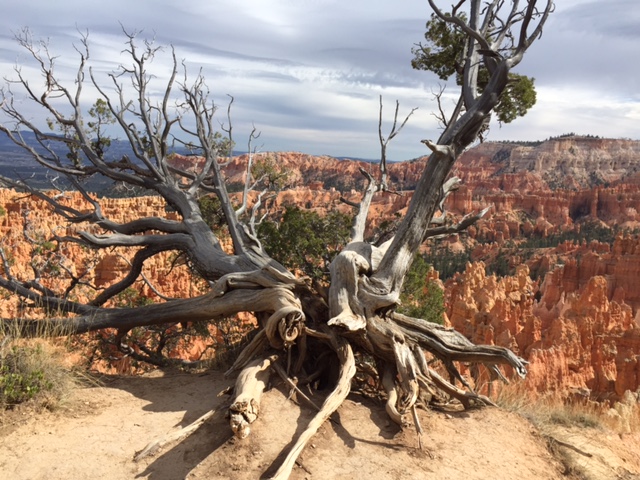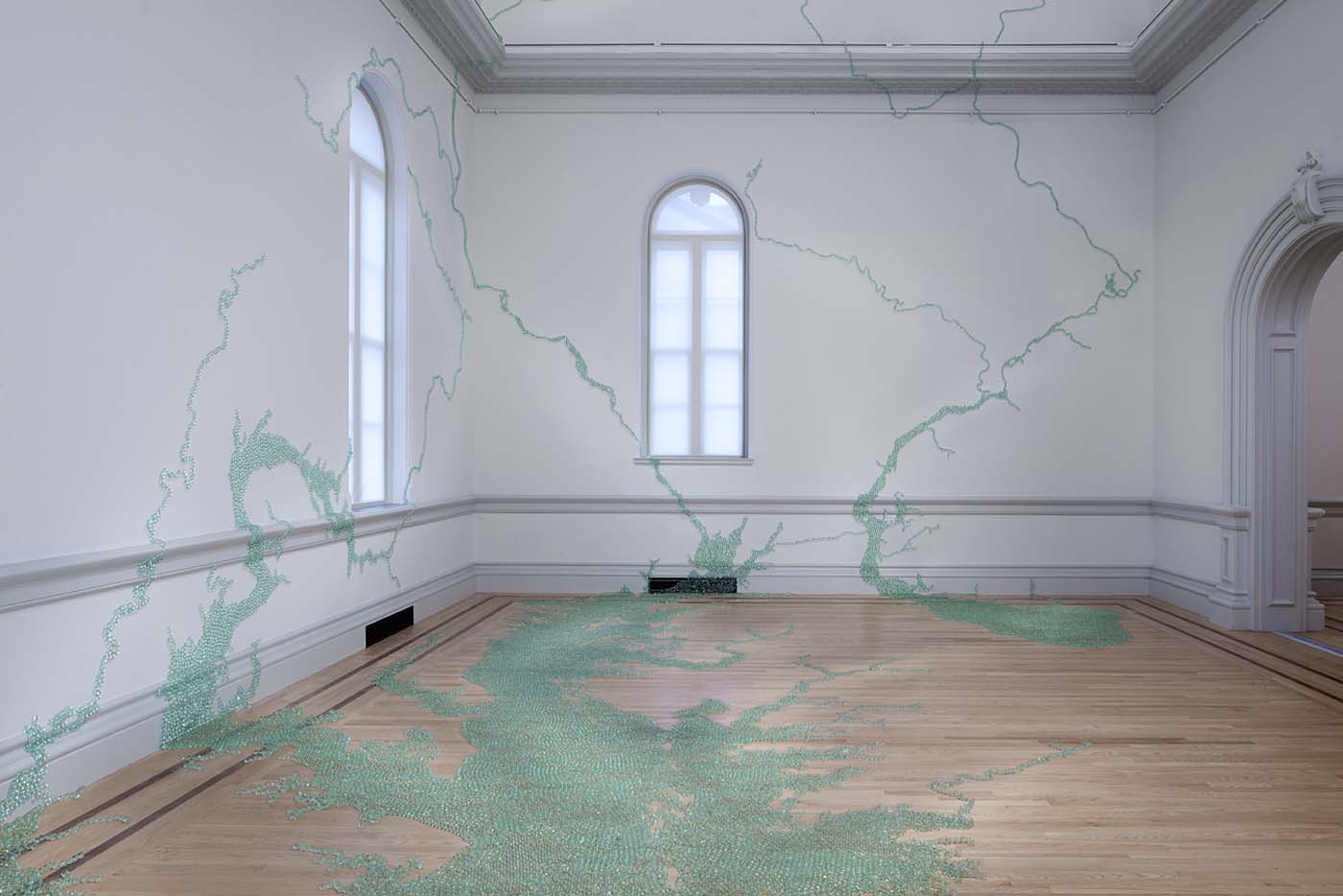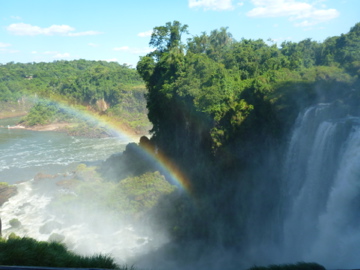
What a jarring juxtaposition. My wife and I had just spent 10 days hiking in the natural beauty of Yosemite, Zion, and Bryce National Parks. We ended this delightful vacation with a one-night layover in Las Vegas—the capital of decadent artificiality. It shocked our systems and sensibilities to move so abruptly from the real to the unreal. Ironically, I had also spent the evenings of our day hikes on the spectacularly beautiful trails of our stunning parks editing a 1,000 page translation of the Tao Te Ching by my qigong master of 20 years, Luke Chan. So, for ten straight days and nights, I was totally immersed in the real and natural beauty of nature, in our current times, as well as in the philosophy of the natural flow of life described 2,600 years ago by Laotzu. So the shock was profound when we entered the unreal, glitzy, dazzling insanity of Las Vegas.
Luke had worked for over 10 years on the monumental effort of translating the Tao Te Ching into an accessible and thoroughly researched version of this timeless document. He not only studied the Chuang-tzu translation, but also poured diligently over several other translations including the Ho and Wang translated versions of the text. He organized his book into the Eight Secrets of Tao Te Ching, the English translation of Chuang-tzu quotes, the verbatim translations of Ho Shang Kung and Wang Pi, and a concordance of dictionary definitions of Chinese characters. In the introduction to his book, Luke writes:
“It is time for all us to wake up. Let’s be reminded of something we already know: That simplicity has power; self-reliance has power; loving ourselves has power to bring happiness; loving others has the power to bring peace; loving nature has the power to ensure our children and their children have a fair chance to live.
To survive we must change the old way of thinking that has created the problems of today to a new way of thinking for the solution of tomorrow. ‘See beauty in the ordinary; embrace simplicity.’ Laotzu’s words have been echoing through space and time for thousands of years. The Tao of the old can be a solution for today’s excesses and greed.”
According to Luke, the purpose of Tao Te Ching is to teach the world to live harmoniously through the Tao of long life. The Tao Te Ching sets out to answer eight important questions:
- Where do we come from and where are we going?
- Can the opposite of a profound truth also be true?
- What is the invisible action wuwei (Can a flap of the wings of a butterfly in one place cause a tornado in another)?
- What happens when we reach total silence?
- Are we born enlightened beings?
- Is there cosmic justice?
- What is enough?
- Are we altruistic in nature?
Categorizing the answers to the above questions, Tao Te Ching can be grouped into eight principles or secrets: 1) Tao, 2) Oneness, 3) Action, 4) Silence, 5) Life, 6) Peace, 7) Contentment, 8) Love.

Much has been written about the Tao Te Ching, but no one, before Luke, had made the effort to take into account the most scholarly interpretations of the text. One of the most popular accounts of Taoism is the Tao of Physics, by Fritjof Capra. In this book he suggests that Taoists see all changes in nature as manifestations of the dynamic interplay between polar opposites yin and yang, and thus they came to believe that any pair of opposites constitutes a polar relationship where each of the two poles is dynamically linked to each other. For the Western mind, this idea of the implicit unity of all opposites is extremely difficult to accept. In the East, however, it has always been considered as essential for attaining enlightenment to go beyond earthly opposites.
When I spent a month in China studying qigong with Luke, he would usually spend the afternoons discussing the principles of Taoism. I would take copious notes and type up my impressions in the evening. Here are some of the principles that came clear to me during that intensive time with Luke, and which I included in my book Being at Home in the Universe:
- Love each other
- Love interdependence: We are One. Everything is related
- Greet each day with gratitude
- Share what you have: Enough is enough. The world is for everyone
- Love peace
- Live life fully
- Silently keep the center
- Connect with the cosmos
- Seize the moment
- Make effort
- Trust in the universe. Find the gift in the good and the bad
- Return to the enlightened being of your infancy
- Anticipate and prepare
- Stand up for yourself, others, and the environment
- Laugh at success and failure
- Grow perspective
In spite of the intuitive “rightness of these principles, many people are unable to accept or understand the Tao Te Ching because they think it was designed to fool people into accepting the authority of leaders. Some of the most “controversial” principles that stand out in the Tao Te Ching revolve around the call to be simple, soft, and to not accept conventional thinking, rational knowledge, or accumulated wisdom. But, of course, soft is like water and has lots of power if one can use it. And, according to Occam’s razor, the most profound solution to a complex problem is sometimes the simplest one.
I don’t think the intention of the Tao Te Ching and Taoism is to advocate for one-sided points of view. Indeed, the core of Chinese philosophy is yin (shady side) and yang (sunny side)—that we find each in the other. All of the research and experience I have had points to the need to accept the duality and simultaneity of human behavior: responsive and initiative, nurturing and demanding, conditional and unconditional, supportive and directive, and yes—soft and hard as well as simple and complex. I believe it is important to convey this multi-dimensional requirement we have as humans to live productively, peacefully, harmoniously, and prosperously.
For me, I had a hard time finding anything but yang in the National Parks and anything but yin in Las Vegas. I guess if I were a true Taoist I would be able to see that there may be some “bad” in the National Park system and some “good” in the Las Vegas culture. Sometimes it’s just hard to find either when we have a one-sided point of view.
Also published on Medium.




Best ever!